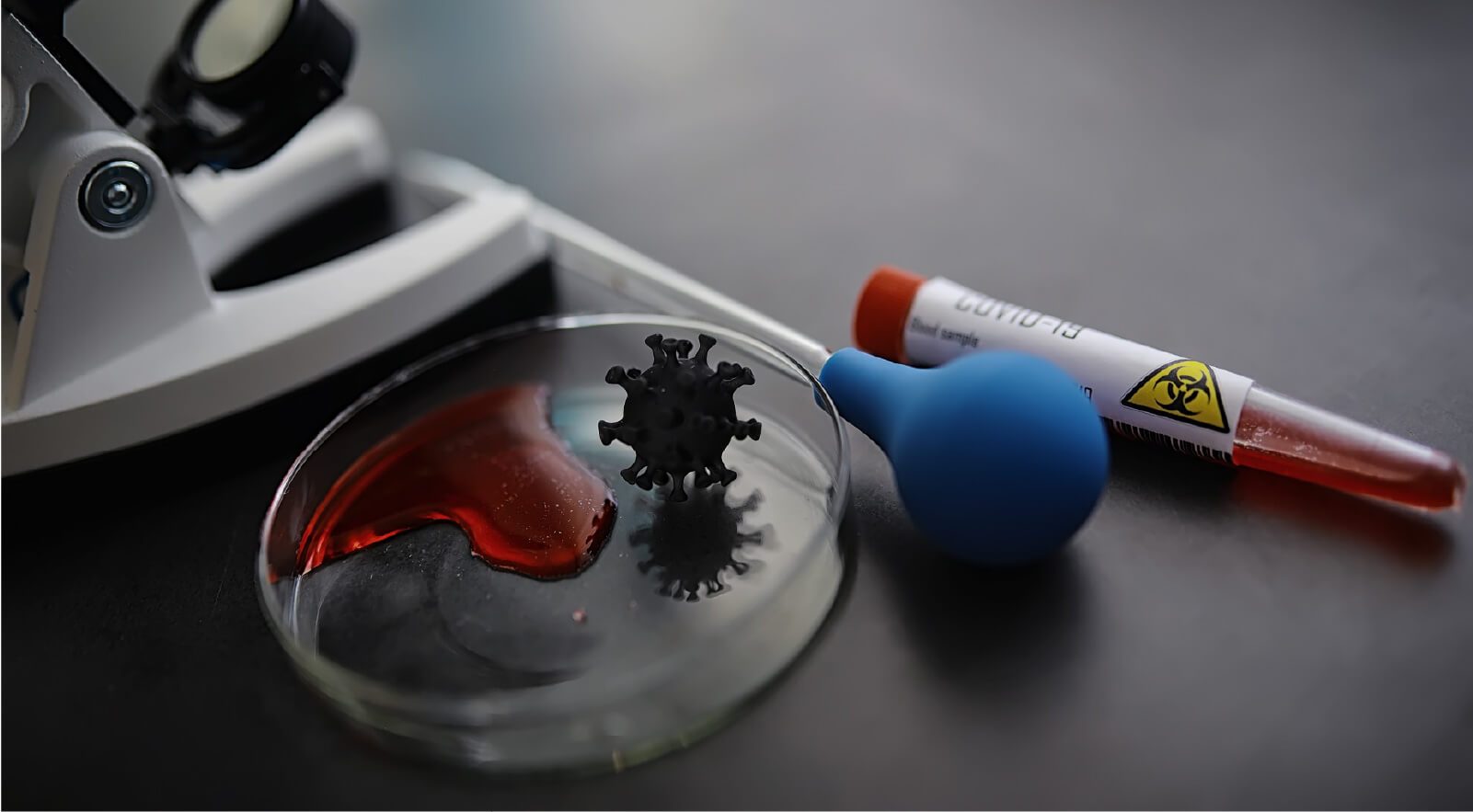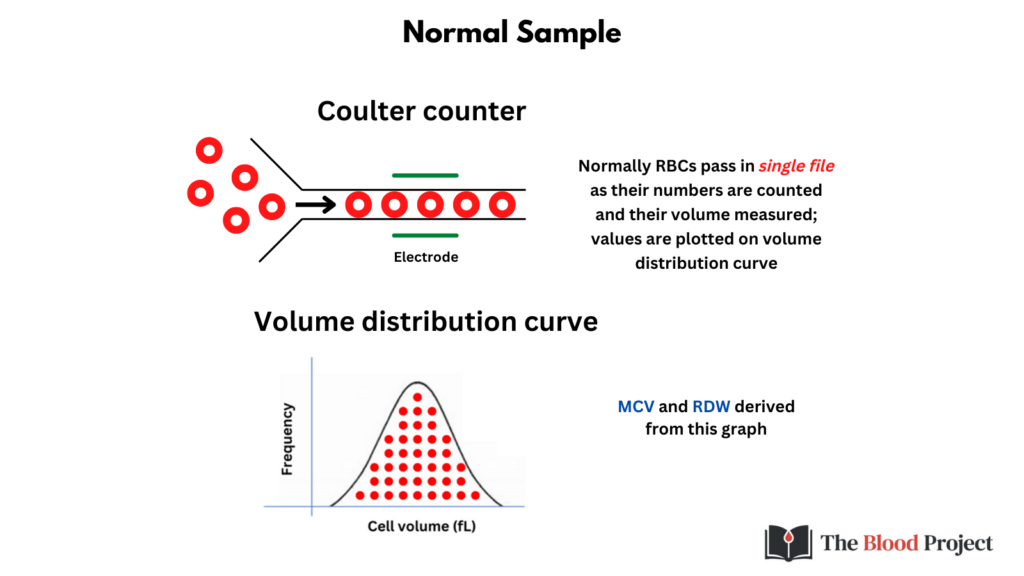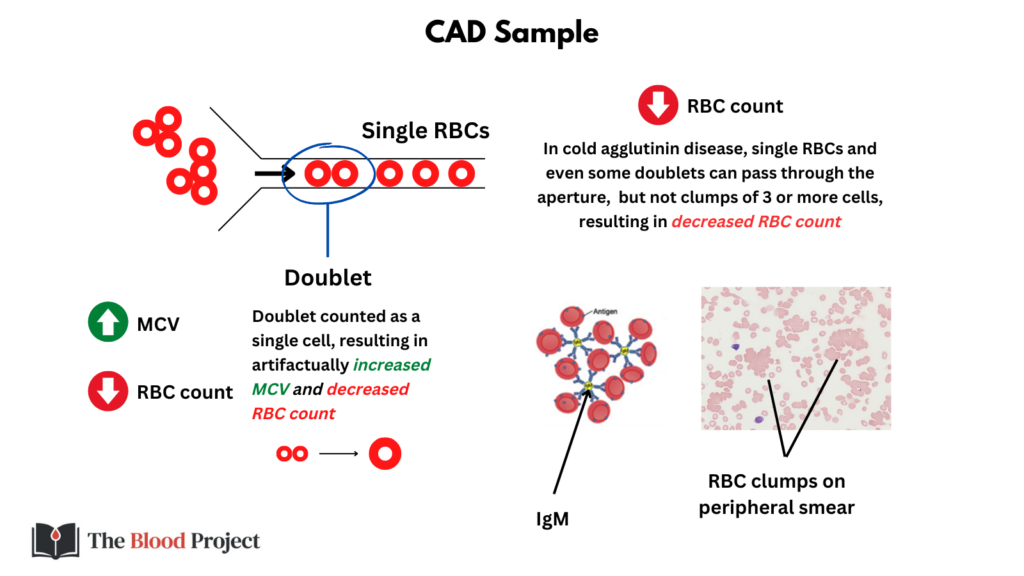
Answer to Case on Crazy CBC Values!

Answer: Cold agglutinin disease (CAD)
The diagnosis can be made using pattern recognition (low RBC count + high MCV + falsely high MCHC = CAD), though we can narrow the differential diagnosis by considering first principles:
- Out of all the CBC results, the one that stands out the most is the MCHC (66.7 g/dL). Hb is supersaturated at 40 g/dL, so this patient’s MCHC is not physiologically possible. It MUST be an artifact.
- MCHC = Hb/Hct. Out of these two parameters, Hb is directly measured and rarely spuriously decreased, whereas Hct is calculated from MCV and RBC count (Hct = RBC count x MCV), both of which are subject to lab interference.
- In this case, if we accept that the Hb is correct, the extreme elevation in MCHC means that the Hct is artifactually reduced (i.e., the MCV and/or the RBC count is/are falsely low).
- The RBC count is very low (1.1 x 10^12/L) and the MCV is actually high (123 fL), giving a predicted Hct of 1.1 x 10^12/L x 123 fL = 14.9%. So, the problem is clearly with the RBC count. (The real Hct based on the spun sample is 27%).
- A falsely low RBC can occur from RBC clumping in CAD or from in vitro hemolysis. The latter may cause a falsely lower RBC count and Hct, and falsely higher MCH and MCHC, but not MCV.
- So from first principles alone, one arrives at CAD as the likely diagnosis.





